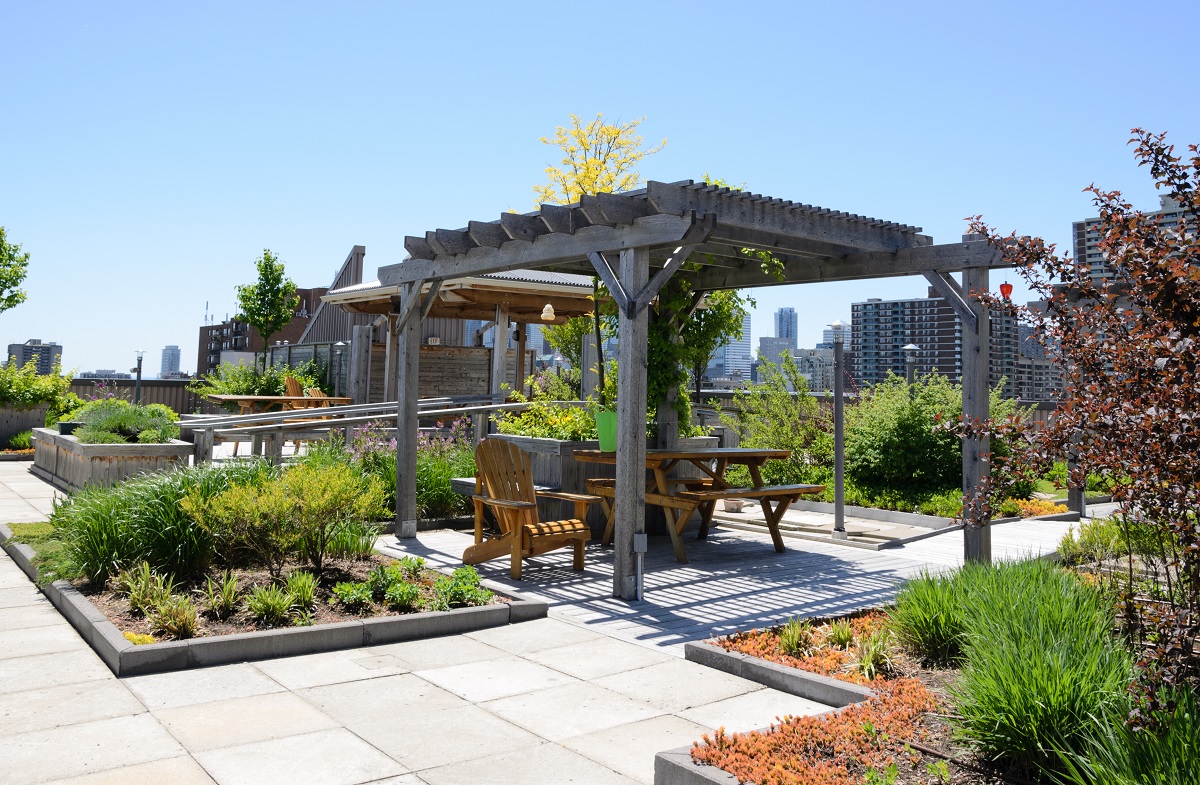If you’ve ever searched photos of gardens in urban areas, there’s bound to be at least one photo of a rooftop filled to the brim with plants, small trees, and shrubs. For a lot of city dwellers, having your own miniature rooftop garden is a dream.
However, setting up your own rooftop garden can be a challenge. Aside from having several factors to weigh in on, it might take weeks to plan things out accordingly. But just like any project in mind, a project starts with motivation, persistence, and skill.
Cost
The idea of getting a rooftop garden might have already gotten you excited, but it’s best to take a step back and re-evaluate all the factors that might come into play. Planning is key to ensuring that you have the right funds to buy all the essentials. Do you have enough budget for tools? Do you plan on placing a roof over your rooftop garden?
Don’t worry. You don’t have to spend all of your money on one go. You can start by focusing on one aspect of your garden. The essential parts of your garden tend to be plants and your pots. Some homeowners will also construct partitions that are filled with soil where plants can be placed in. But at the end of the day, the priority should be the plants and the different means of maintaining them.
Permission
If you’re living in a rented apartment with different people sharing the same building, it’s only rational that you ask permission to use the rooftop for plants. Of course, certain areas might have building codes and laws that sometimes restricts some plants due to fire regulations and sometimes even height restrictions.
Flooring
Since you’re in a rooftop garden, there are several ways of installing flooring. Most would suggest using either wooden boards for several themed gardens. Several homeowners would suggest having a designated area that’s elevated and filled with soil if you plan on planting shrubs and small trees.
Even though the soil is used for planting plants, it’s not a recommended flooring in covering your roof’s flooring with it since soil can retain water which can cause moisture to build-up on your roof’s interiors. If you’re not too keen on wooden boards, you can use artificial grass turf to make your flooring blend-in seamlessly with the greenery you plan to surround it.
Protection
Walls and partitions are a great way of protecting your plants that are being funneled into streets and high rise buildings. If you are situated in an area were storms, high winds, and heavy rain are quite common, you might need to install a roof as a means of protecting your plants from the elements.
In Australia, devastating hailstorms can cause property damage and injuries in some major cities. Impact-resistant roofing materials can help protect your potted plants from damage.

Sunlight Intensity
Since Australia is known for having a variety of different climates, most plants will range from tropical to perennial with most being able to thrive in deserts. Tropical plants are great if you have a shady part of your rooftop since they need little to no sunlight.
Heat And Shade
Aside from the sun radiating heat towards your roof, there’s also the surrounding heat that your roof is accumulating over time. Compared to plants in the ground level that have the protection of shade from trees, potted plants don’t have the luxury of protection from heat. While you might be able to provide some form of shade from roofs and overhangs, you might have to choose wisely on what plants can survive a good amount of heat.
Of course, there will be times that you will need to invite friends and loved ones to your garden. Having shade will help reduce the build-up of heat for you and your guests.
While there are plants that can withstand a good amount of heat, there are also plants that are quite sensitive to changes in temperature. It’s best to keep this in mind if ever you’re moving plants towards your roof.
Lighting
Lighting and electricity aren’t necessarily that important for your rooftop garden unless you are planning on using it as a venue for multiple events. You can use in-ground lighting and hanging lights as a way of lighting your rooftop.
Tool Storage
Well, you can’t just have your tools lying around after work, can you? Having a storage area where your tools and equipment are snugged in can help ensure that they stay in pristine condition for years to come. After all, nobody wants to use tools that have rusted away.
Water
Last but not least, ask yourself how water goes through your garden? Do your plants need it often? Most of the time, plants that are accustomed to a good amount of heat won’t necessarily need too much watering. But just to be sure, having a water tank at the roof can help provide a constant flow of water. Nobody wants to haul gallons of water from the ground level to the rooftop every now and then.
It might seem like a project that you can do in your own spare time, but setting up a rooftop garden can be a long-term commitment. Not only will you have to constantly water your plants, give them the right balance of light and shade, and the right soil quality, you’ll also need to ensure that your rooftop garden is designed well for you and your guests.
Setting up your own rooftop garden can a challenge, but after you’ve done all in your power to make your dream come true, it’s going to be all worth it.
